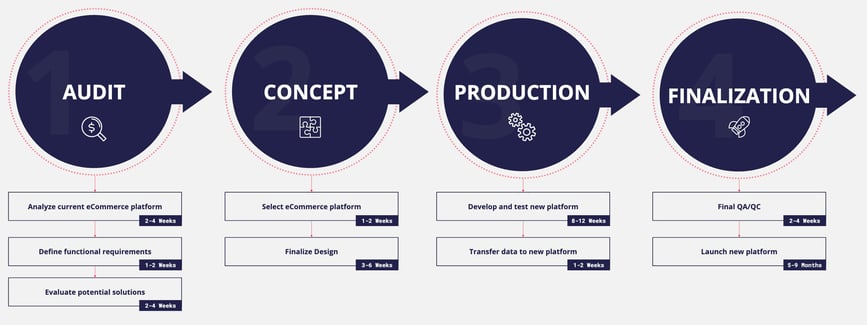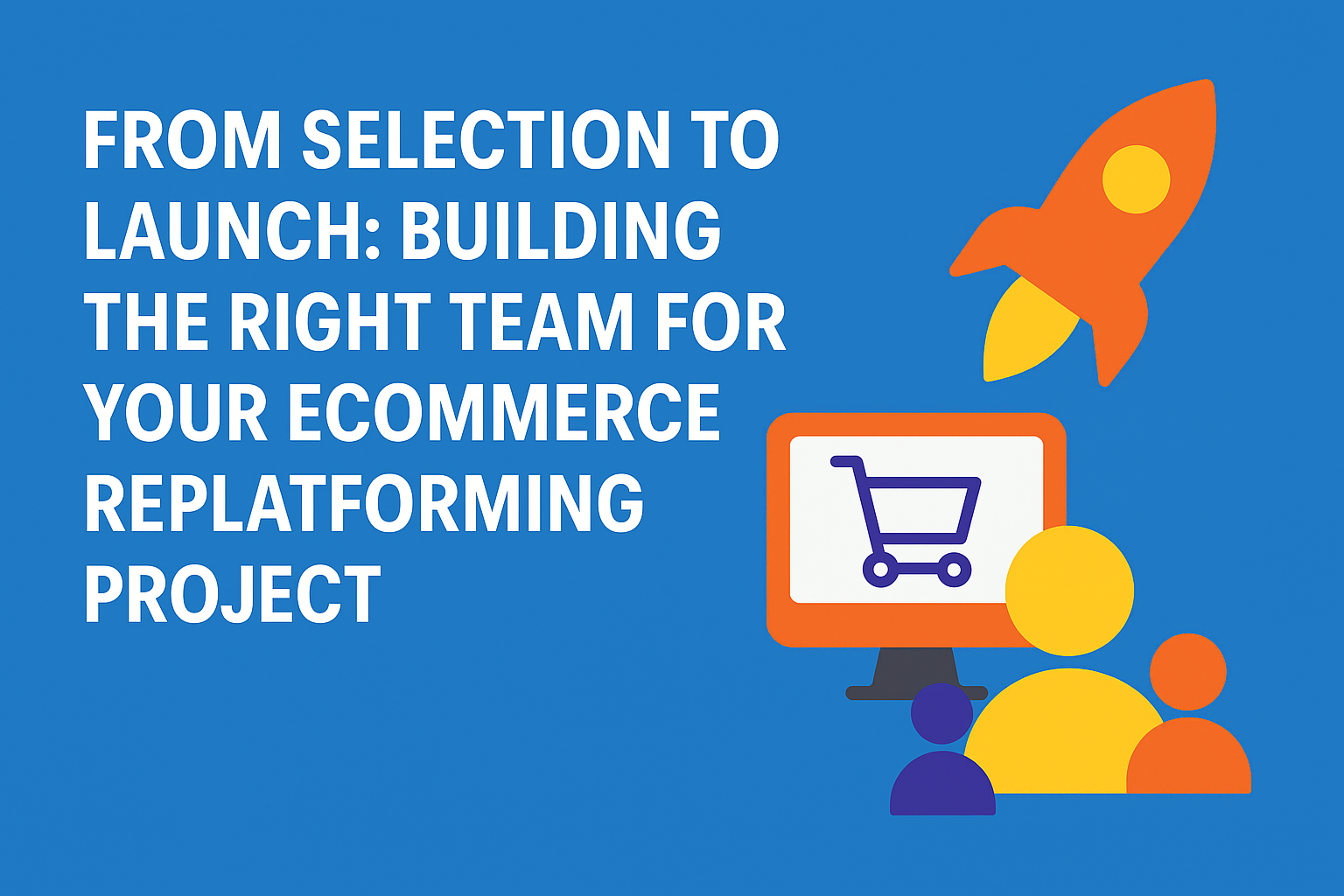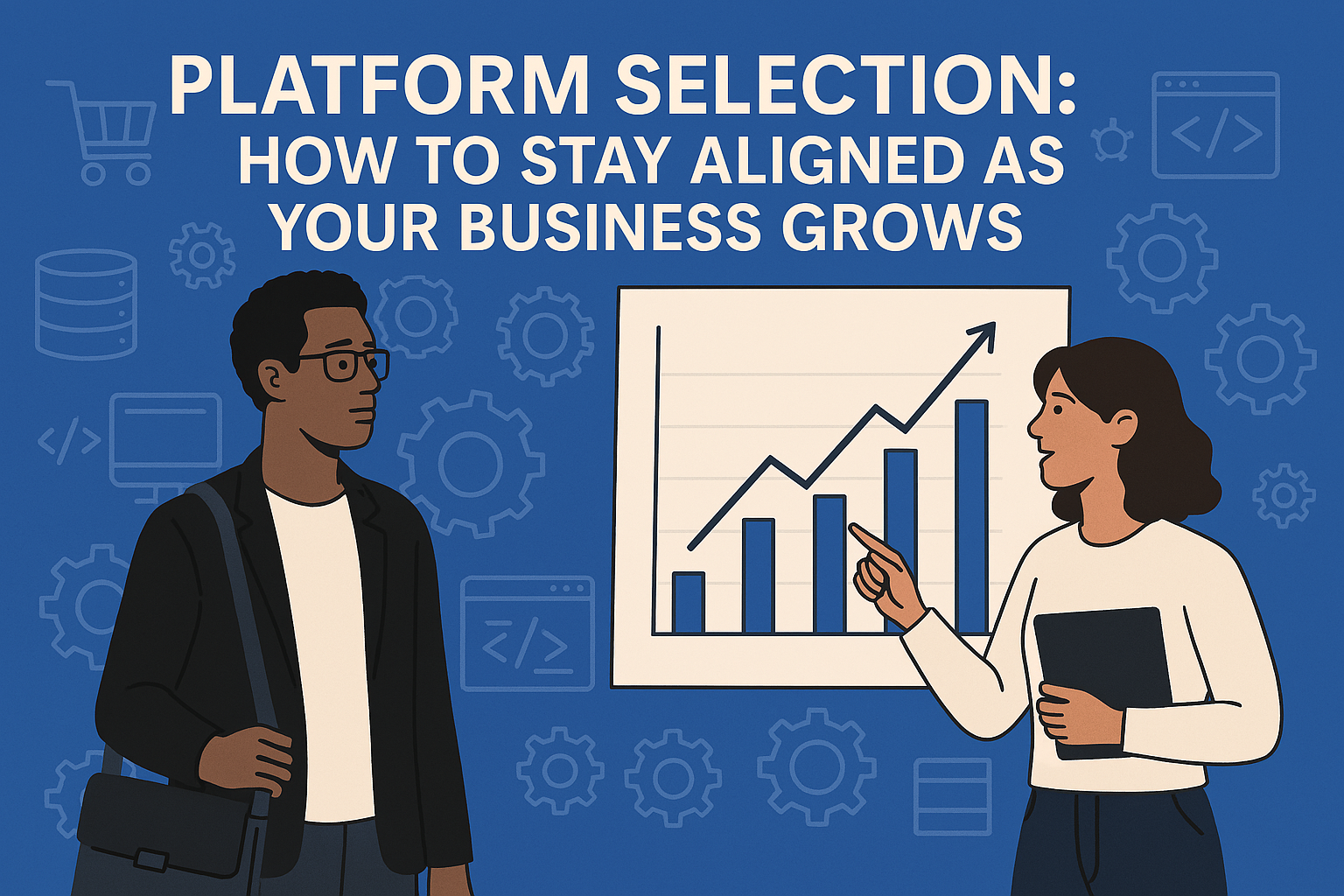Building the Right Team for Your eCommerce Replatforming Project
Ensure a smooth eCommerce replatforming launch with the right team. Discover how to choose vendors, define roles, and manage your project for lasting success.
4 min read
 Tim Bucciarelli
:
April 24, 2023
Tim Bucciarelli
:
April 24, 2023

eCommerce replatforming is the process of transitioning from an existing eCommerce platform to another. For example, migrating from Shopify to Magento or from Salesforce Commerce Cloud to BigCommerce.
Replatforming can be a complex process, involving many different stakeholders, such as developers, marketers, and management. For any eCommerce replatform, it is essential to have a skilled project team that plans, implements, and tests their work to effectively deliver the required functionality while minimizing disruption to the online business operations.
There are many reasons for replatforming:
Outdated technology: Your current platform may be outdated and no longer able to support your existing business needs.
Poor performance: Your online store may be slow, causing a negative user experience.
Security concerns: Your current platform may not be secure, leaving your online store vulnerable to attacks.
Lack of scalability: Your business may have outgrown your current platform's capabilities, and you need a more scalable solution.
Limited integrations: Your existing platform may not allow you to integrate other internal platforms and tools. A new eCommerce platform may provide greater operational efficiencies through sophisticated integrations.
Lack of customization: Your business may demand more flexibility in design, functionality, and integrations than what your existing platform can support.
Lower costs: Your existing eCommerce platform may be too expensive with required maintenance and support costs. Replatforming can be a cost-effective solution, as new platforms may offer more features at a lower cost.
Russell Marine Products Project Manager, Eddie Smith, says, "We were VERY limited by our old platform. There was a lot of automation we wanted to add, and our old platform did not support them. We could have had custom integrations built out, but we did not want to keep investing in a platform that wasn’t investing in itself."
Replatforming your eCommerce store can offer many advantages, including:
Replatforming your eCommerce store can be a complex process, but following these steps can help ensure a successful transition:
"It turned out that only Ironplane was telling the truth. We were very disappointed in our onboarding processes with varying SaaS providers. It was very much a sink-or-swim experience. The SaaS all performed as advertised, but getting it up and running was painful. The actual transition of sites managed by Ironplane was AMAZING!
Anyone that has ever gone through a major technology changeover typically has horror stories, and I can honestly say that the platform changeover was a refreshment for all employees. Ironplane was there the entire time to help with any issues we had."

In terms of advice for companies considering an eCommerce platform, Smith says:
"Take your time. We had a couple of delays with things that were out of our control. Each time we had the option to rush or pause and re-group. We re-grouped each time, and it was the right choice. There is no need to rush. Interrogate your SaaS providers; have written communications outlining expectations."
As with any eCommerce development project, the duration of an eCommerce replatforming project depends on a variety of elements including the complexity of the existing and new sites, the available migration tools for the specific platforms, the skills of your development agency and the overall project budget.
A moderately complex eCommerce replatform project will likely take between 5 to 9 months. to complete.
Planning is key to ensuring a smooth transition. Create a detailed plan, including timelines, roles and responsibilities, and contingency plans. Test the new platform thoroughly before launch to identify and fix any issues.
In many cases, it is possible to migrate your existing design to your new platform. However, this may require some custom development work to ensure a seamless transition. Generally, it is a good idea to use this as an opportunity to run a UX analysis on your site to pinpoint areas that can be updated to help improve conversion rates. ADA compliance is another significant factor to consider when designing your site.

Ensure a smooth eCommerce replatforming launch with the right team. Discover how to choose vendors, define roles, and manage your project for lasting success.

You need to consider the total cost of ownership (TCO) to make an informed choice when it comes to an eCommerce platform for your business.

Following eCommerce platform selection, evaluate ongoing platform alignment, lock-in, and potential technical debt as your eCommerce business evolves.